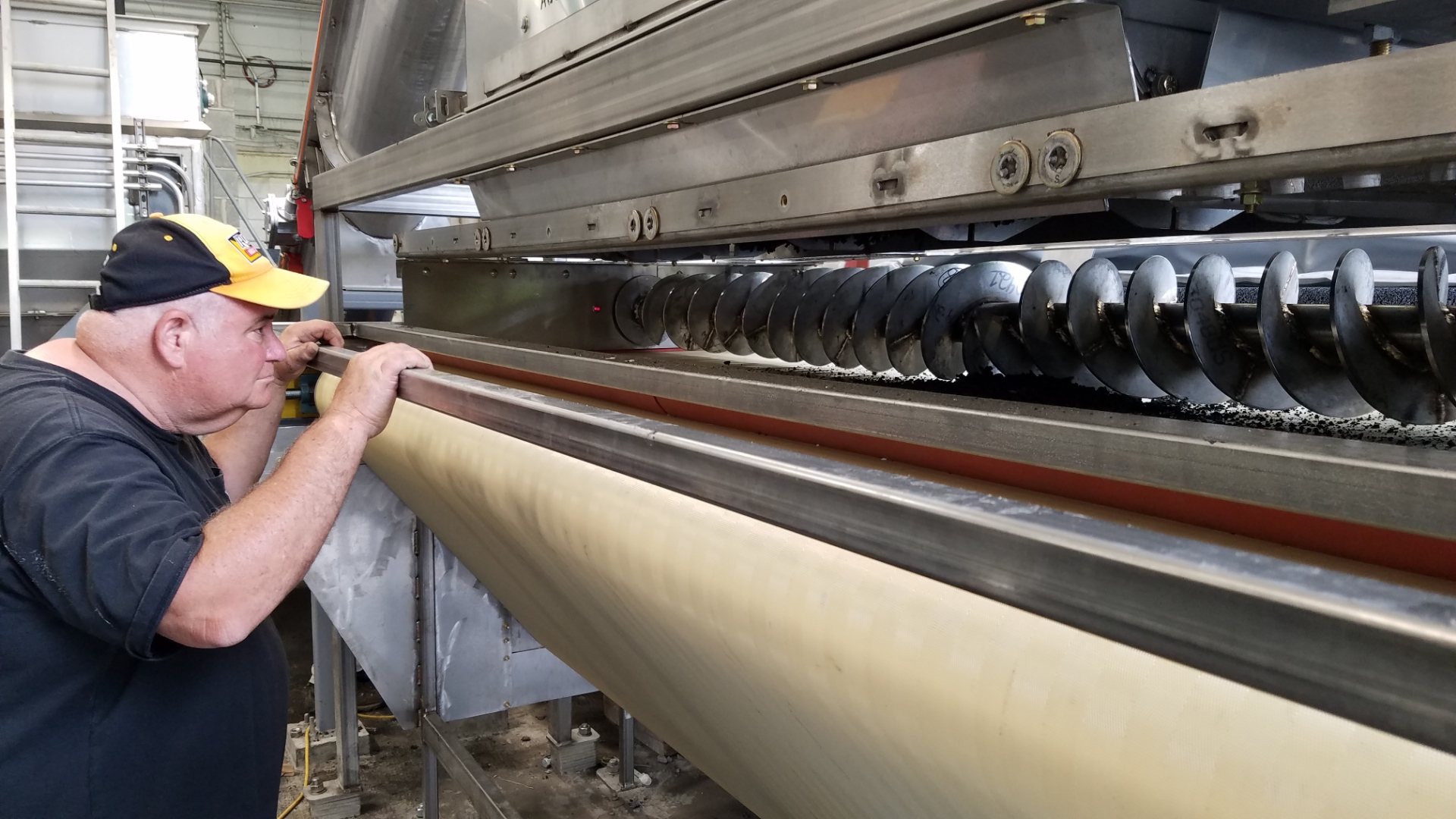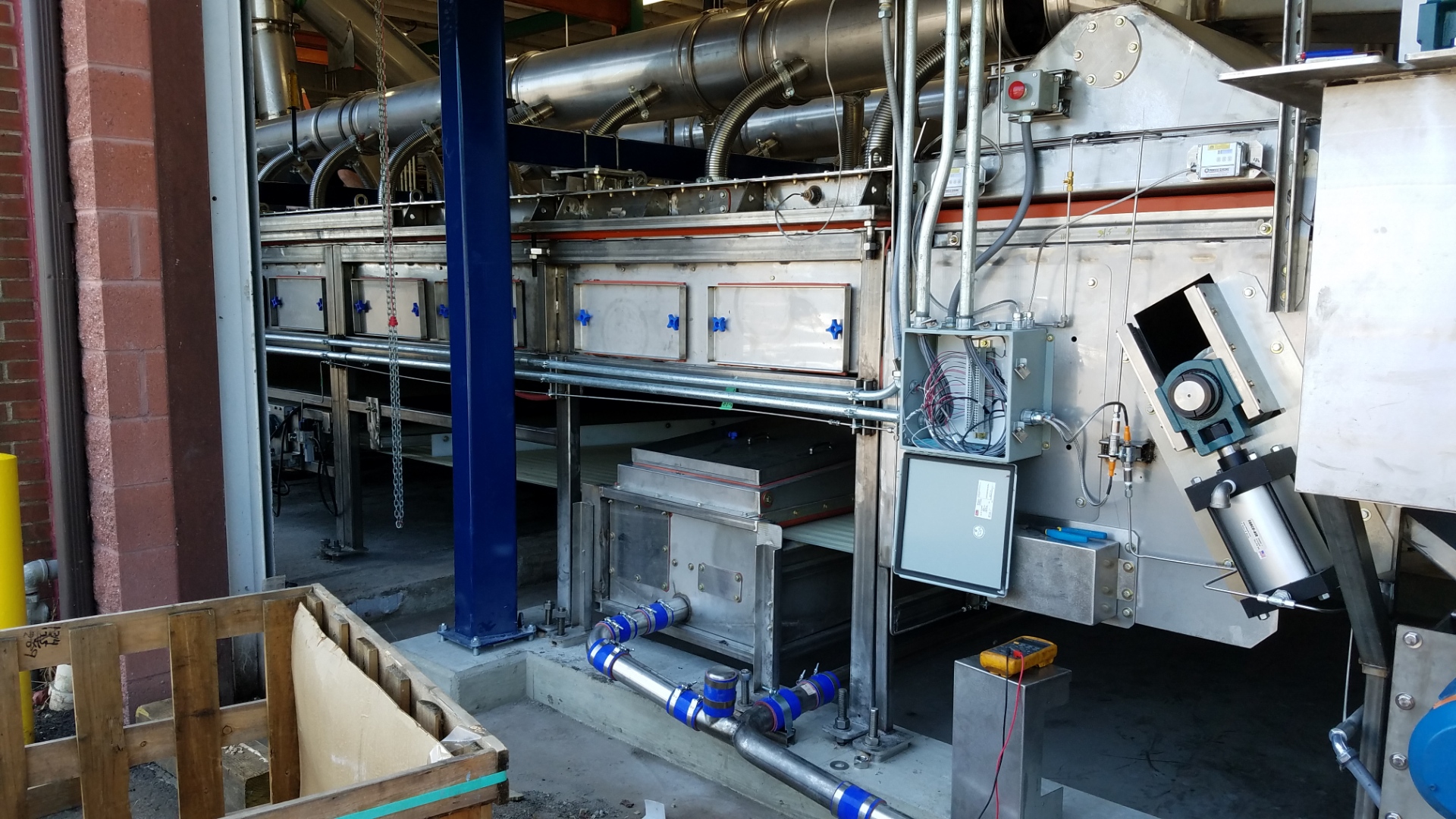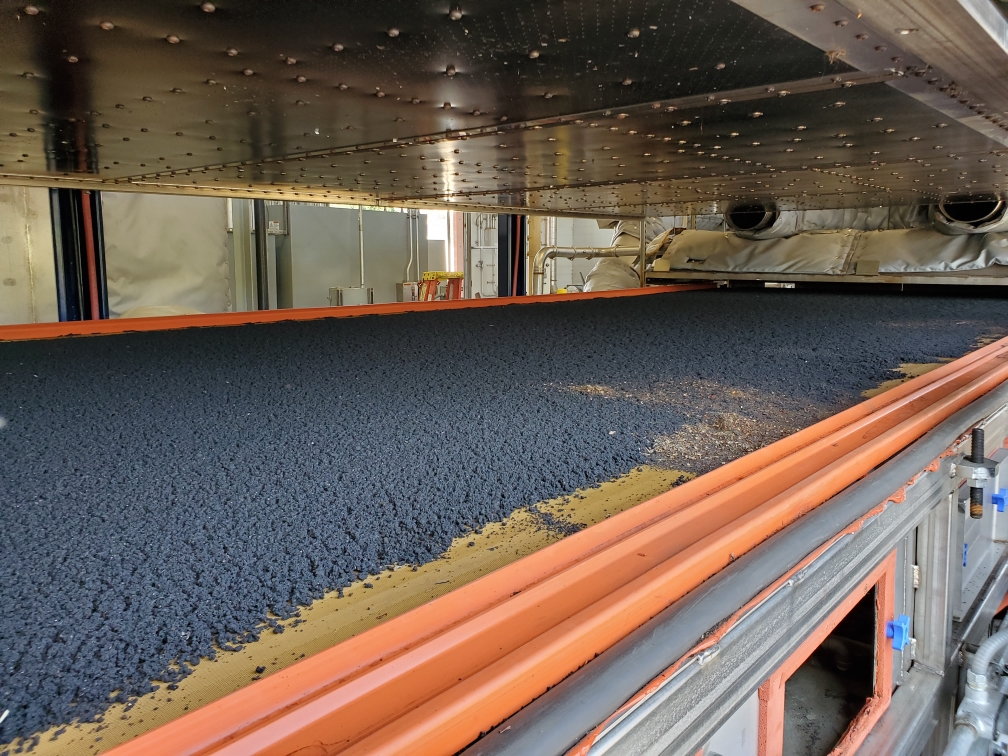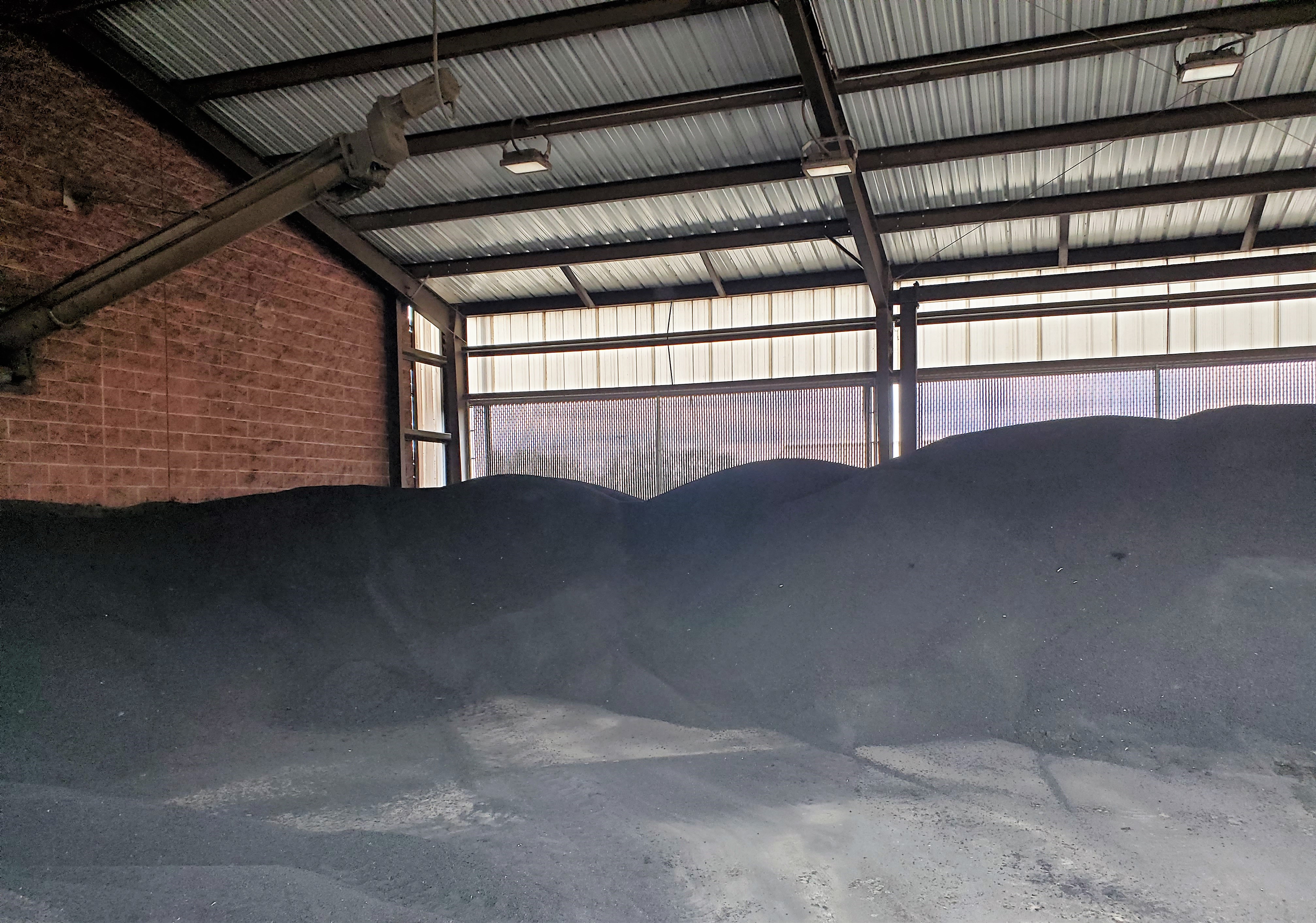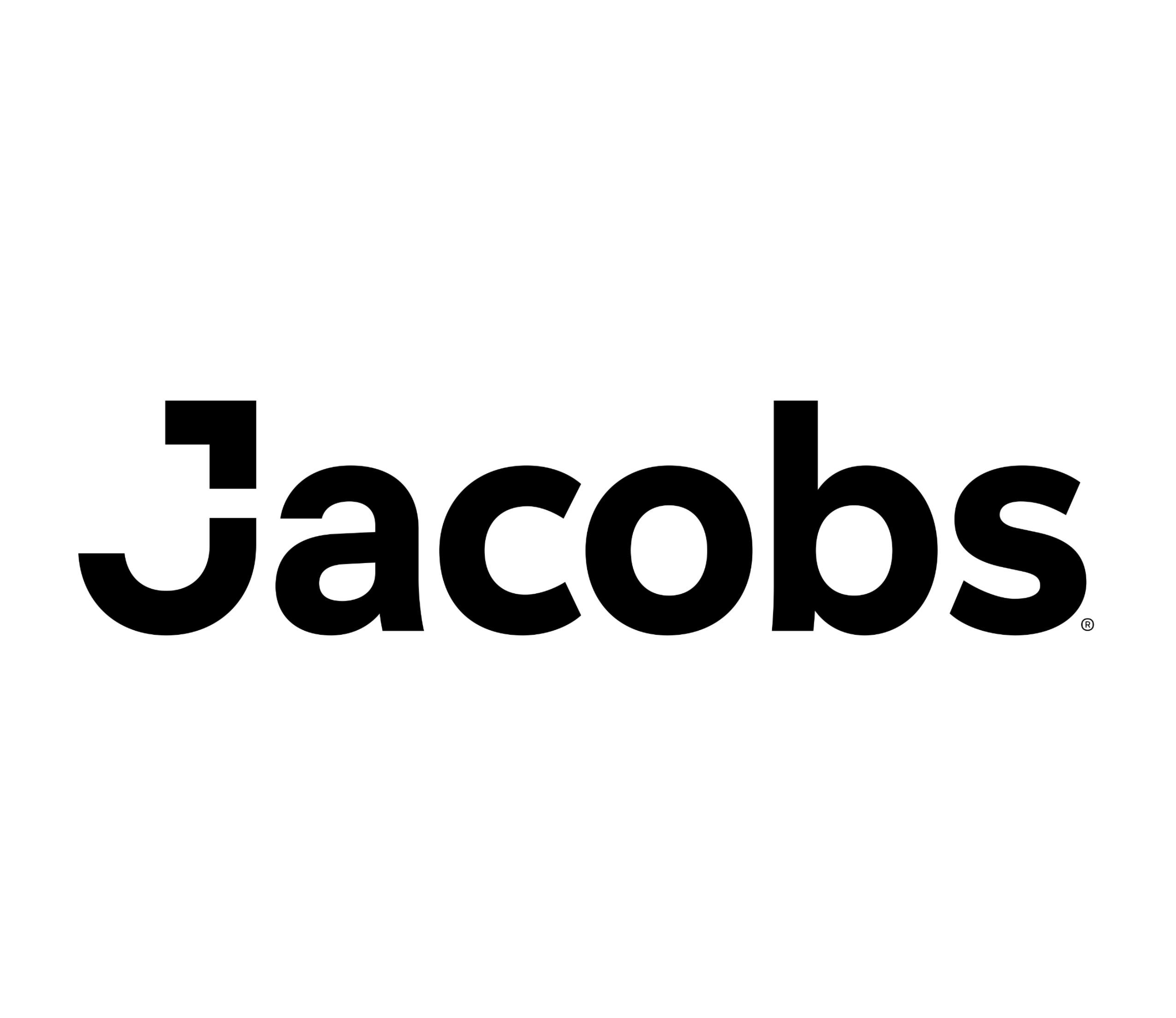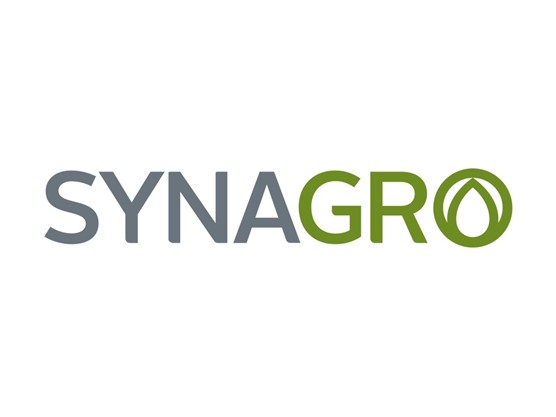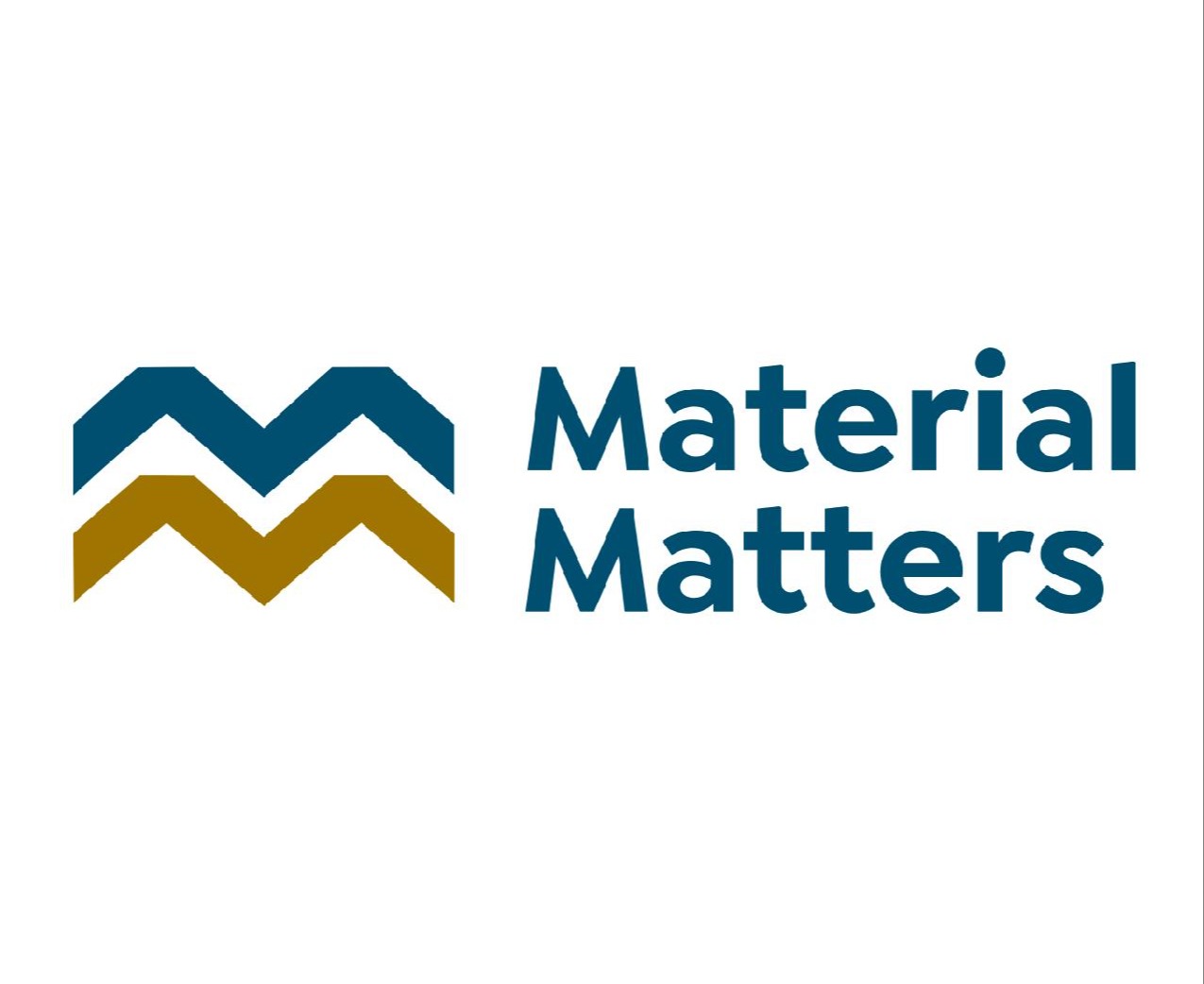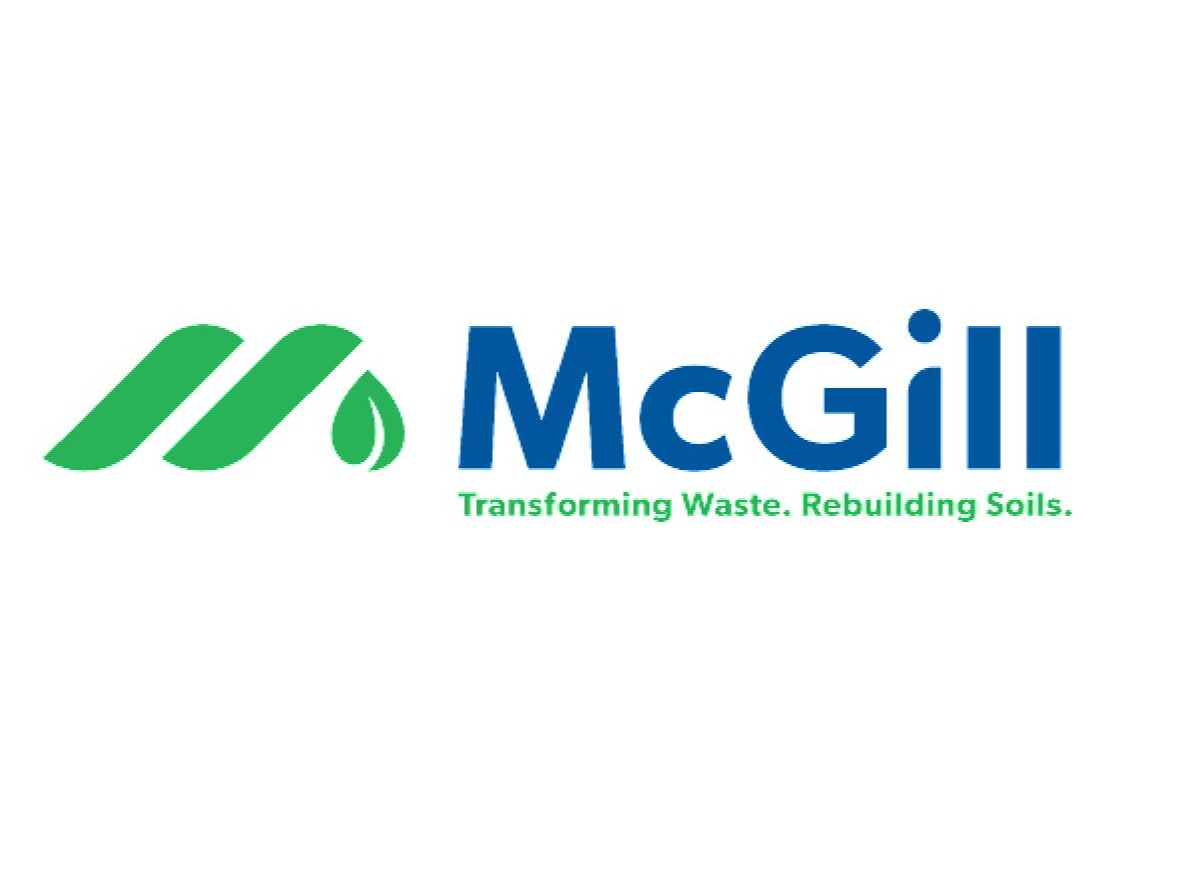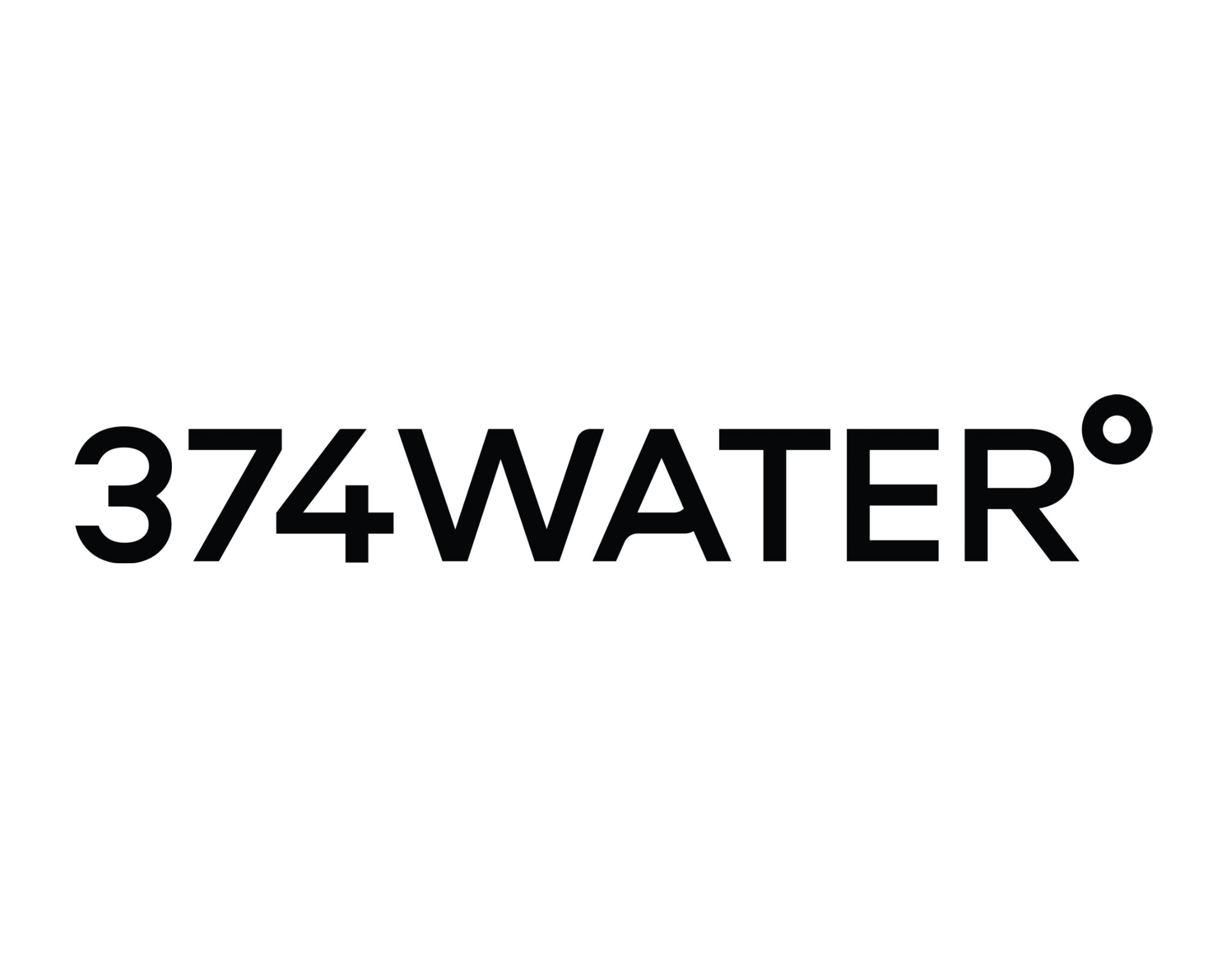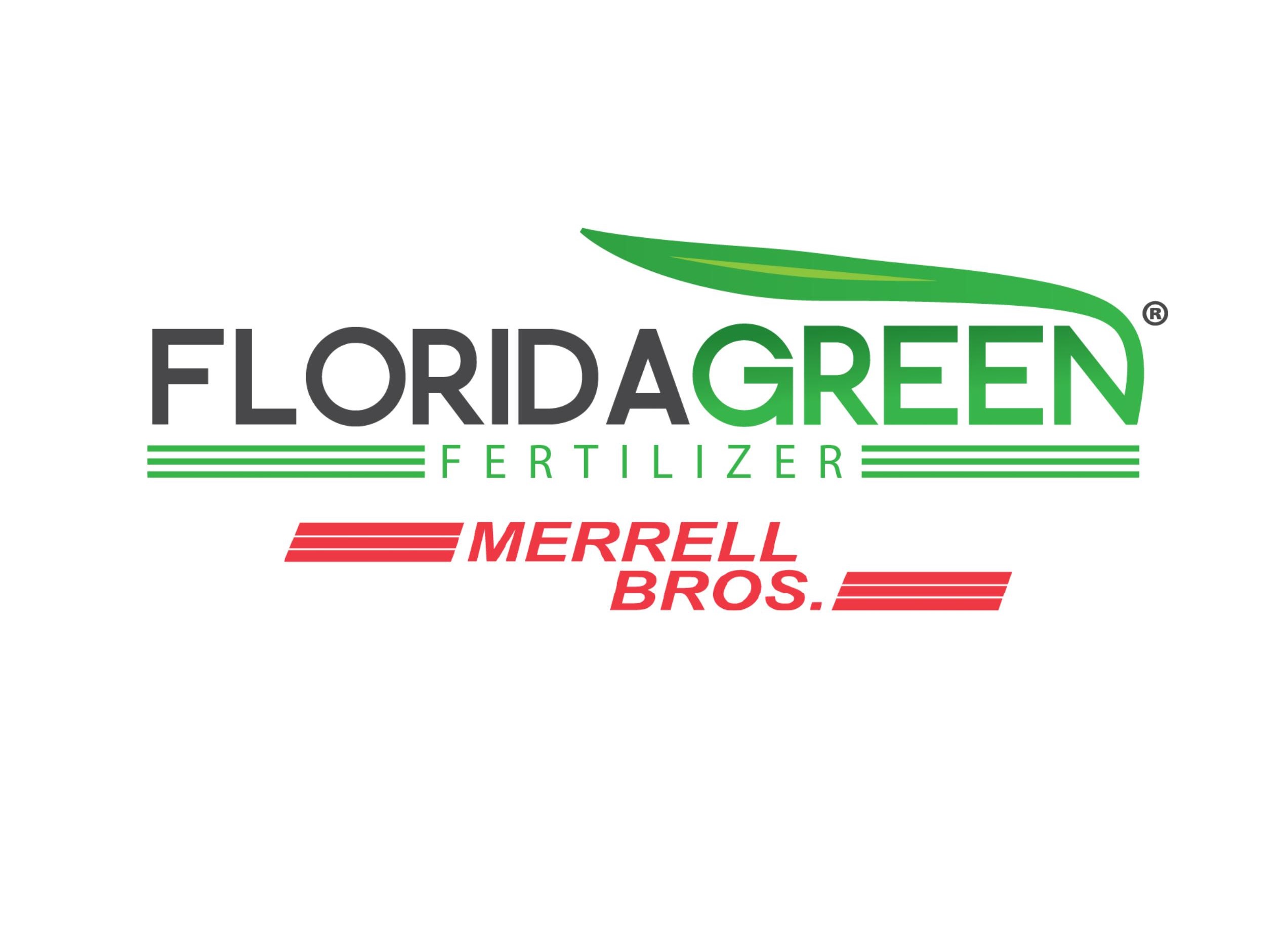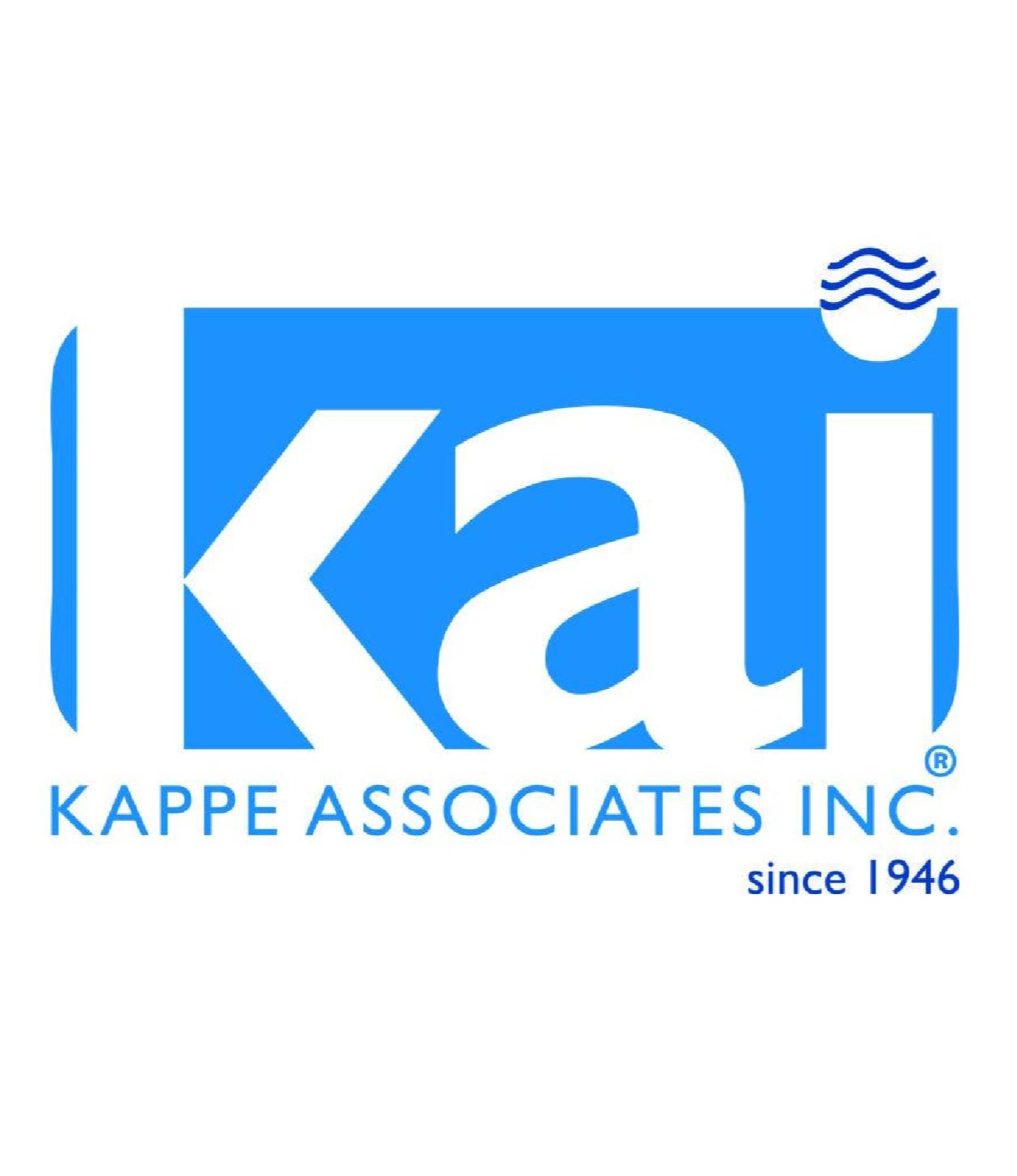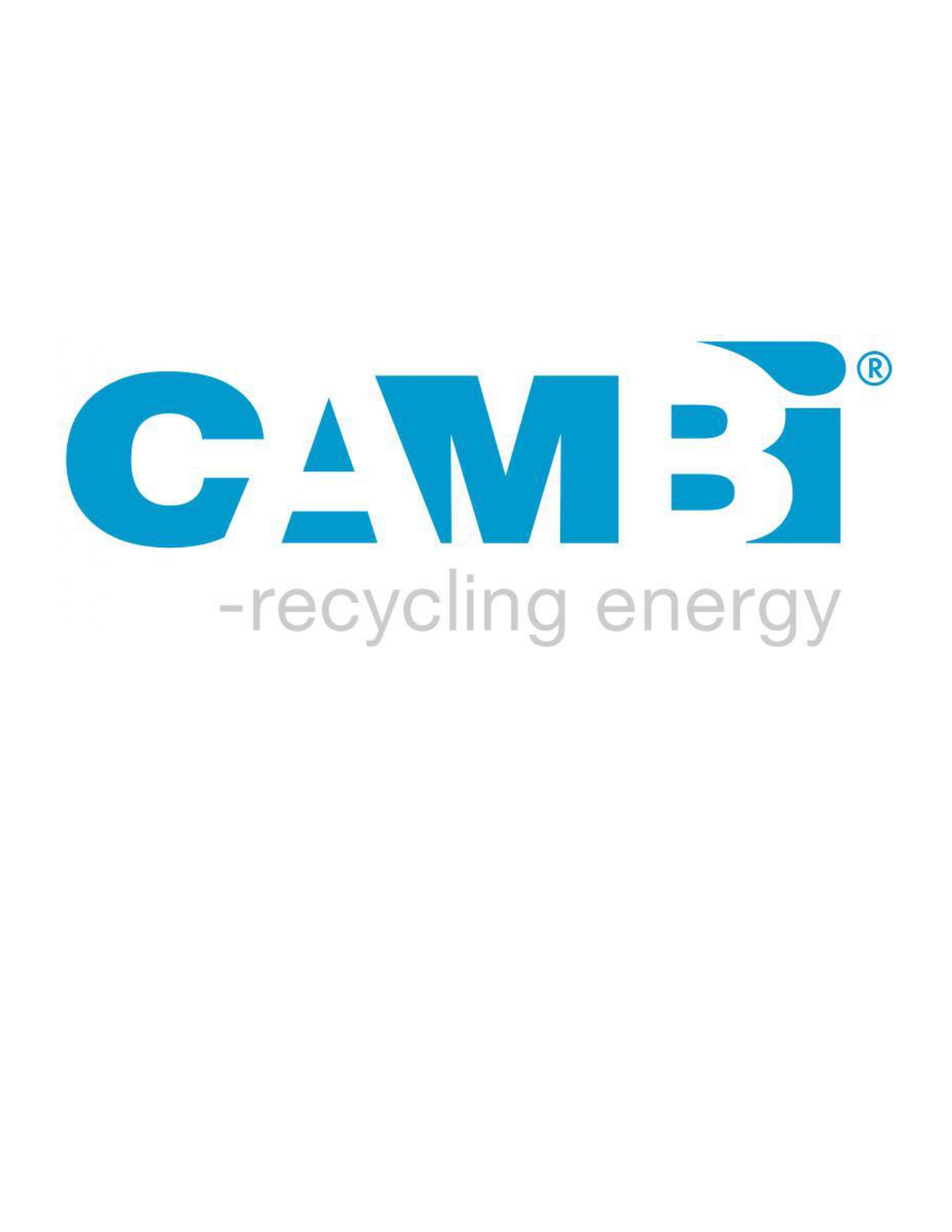- Login
- Home
- MABA
- MABF
- What's New
- Events
- Resources
- Biosolids Advocacy Fund
- Contact Us
|
December 2022 - MABA Member Spotlight featuring Chalfont-New Britain Township Joint Sewage Authority Chalfont-New Britain Township Joint Sewage Authority team works to achieve dryer success,
new community land application program
The Chalfont-New Britain Township Joint Sewage Authority serves a community of approximately 8,500, with an average daily flow of 4.65 mgd, and in 2019 they found themselves considering the next dryer for their facility. With the new dryer selection, they were faced with the question of whether they should continue with a system and technology they had been familiar with for the previous 18 years or if they should consider moving toward a new technology. The Fenton dryer they had in the past had reached the end of its lifetime, and they were eyeing the Gryphon dryer as a new option and opportunity.
Centrifuge cake being fed to drier. About 23-24% solids. (courtesy of Chalfont-New Britain)
Tom Hauser, superintendent of now 25 years with Chalfont-New Britain says the potential positives in the Gryphon dryer were immediately apparent - a lower temperature and the use of air instead of heat transfer effluent, providing a significantly lower possibility of dangers and smells in the operation. The larger question he faced from executive director John Schmidt was the feasibility and functionality of the new Gryphon dryer. “His question to me was, ‘if we’re going to make this investment - are we going to make this work?,’” said Hauser.
Dan Ranker at the feed end during start-up. (courtesy of Chalfont-New Britain)
Hauser and his team gave Schmidt an enthusiastic affirmative response, and began to follow through on that pledge as the dryer went online in June 2020. The team of 9 individuals in plant operations, including 1 lab tech, put on their problem-solving hats in the months to come, and worked with the Gryphon customer service team to troubleshoot different issues and alarms as they presented. Hauser says the team contacted the manufacturer, who could then go online and check the system to see where and how the process was experiencing an issue. With each instance of outreach and troubleshooting the internal team has worked to create a checklist to assess any future issues prior to contacting the manufacturer. “Our team is really driven by a lot of problem solving,” said Hauser, “And with that kind of attitude - it’s hard to make it fail.”
Side view of dryer. (Courtesy of Chalfont-New Britain) Hauser says that for the most part the Gryphon dryer has been reliable and runs well. Additionally, he says that he and his team continue to experience great customer service and support from Gryphon – no matter the day or time. And with higher levels of copper in the influent, due to aggressive groundwater in the region and the previous anaerobic digestion process, the plant had at times created a Class B biosolids product that required regular emptying of the digesters and limited options for disposal. Now, with no anaerobic digestion, they are producing a dried Class A product, with the use of a circular chart recorder, proving the biosolids are at or above 176 degrees for 72 seconds to destroy pathogens. The next step for Hauser and his team was to create a beneficial reuse program. And through their work, and work with Diane Garvey of Garvey Resources, they have built a robust community reuse initiative. Hauser says that he and his operator Dan took several days to do some community outreach, taking with them some of the biosolids as well as their informational sheets. The community was incredibly interested in the product, and Hauser and his team worked to facilitate a symbiotic relationship for all involved.
The first material coming off drier during start-up. (Courtesy of Chalfont-New Britain) Hauser says they give away the biosolids as a free product, dubbed See-N-Be Green, and rent a dump truck to take it to nearby farms – about one month's production. This provides the plant with enough storage space to work for another month. They have also purchased a broadcast spreader that farmers can use free of charge to spread the product on their fields, and they drop it off 2-3 days ahead of the biosolids delivery day. Hauser says the farmers are mostly friends or fellow church goers and they then pass the spreader between them. “Most of our ‘customers’ use it to fertilize their hay fields,” says Hauser, “We call them customers. We treat them like customers.”
See-N-Be Green Storage. (Courtesy of Chalfont-New Britain) Hauser says that through the reuse program the plant’s annual sludge disposal cost is around $1,000 per month of biosolids, which is primarily the rental of the dump truck for the day. Sometimes winter creates a backup based on the ground conditions. In those winter months, the plant sends the biosolids to a composting facility which comes at a greater cost, but Hauser says they generally only need one shipment to the composting facility each winter. The plant has a covered building and silo for use for storage, and they are working to create an automatic switch for overflow. With over 35 years of experience in operating treatment plants, Hauser says that he and his team are proud to see the improvement from twenty years ago when the biosolids disposal cost was $250,000 annually for liquid hauling and landfilling, to the current practice and technologies yielding a Class A product and a relationship with the community that results in zero disposal costs replaced with a marketing cost of around 5% of that. For additional information, contact Thomas Hauser, Superintendent, Chalfont-New Britain Township Joint Sewage Authority at 215-345-1225, or [email protected]. |


